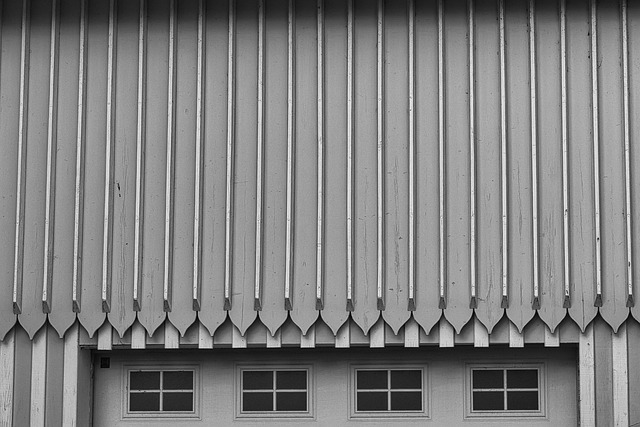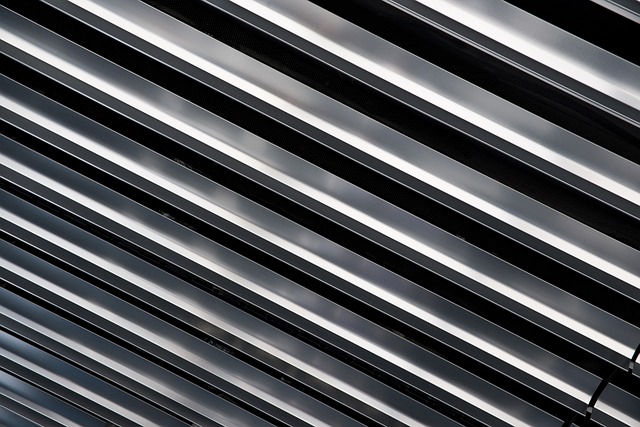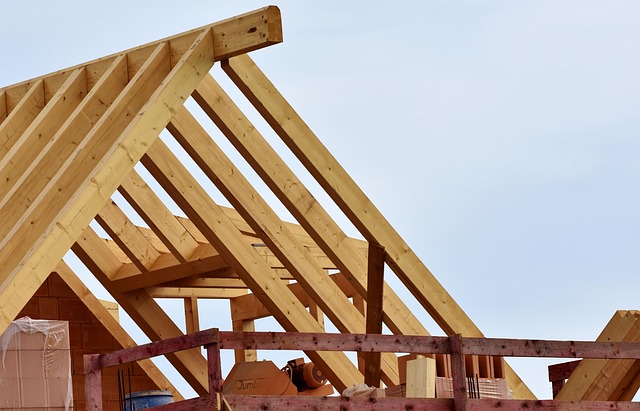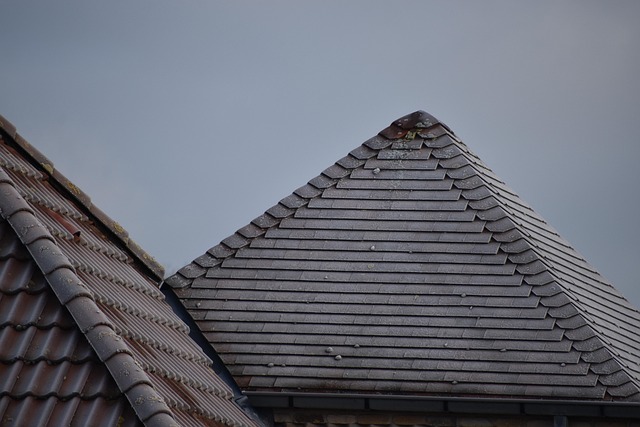Commercial metal roofing is a versatile, durable, and low-maintenance option known for its exceptional longevity against extreme weather conditions. It offers superior insulation, reducing energy costs and minimizing a building's carbon footprint. With various styles, colors, and finishes available, metal roofing allows for customization while enhancing structural integrity. The three primary materials—steel, aluminum, and copper—each have distinct advantages. Installation involves careful planning, including roof structure evaluation, water-resistant underlayment, and precise fastening of metal panels. Regular inspections and simple cleaning routines ensure optimal performance and maximize the lifespan of these roofs. Metal roofing's reflective surface reduces heat absorption, contributing to energy efficiency. Its adaptability in design and customization makes it a standout choice for commercial buildings, catering to diverse architectural tastes. Additionally, metal roofing is suitable for historic restoration and industrial facilities due to its longevity and low maintenance requirements.
Metal roofing is transforming the commercial real estate landscape. This durable, low-maintenance option offers unparalleled longevity and energy efficiency, making it a smart investment for businesses. From understanding the basics to exploring design options and real-world implementations, this guide delves into the world of commercial metal roofing. Discover why this game-changer is gaining popularity across industries, enhancing aesthetics while providing robust protection for your commercial property.
Understanding Commercial Metal Roofing: An Overview

Commercial metal roofing is a versatile and durable option for businesses seeking reliable protection over their facilities. This type of roofing system offers a wide range of benefits, making it a popular choice among property owners and managers. Metal roofs are known for their longevity, with the ability to withstand extreme weather conditions, including high winds, heavy snowfall, and intense sunlight. They also provide excellent insulation, contributing to energy-efficient operations and reduced heating/cooling costs.
The installation process involves specialized techniques to ensure a secure fit, preventing water penetration and potential leaks. Metal roofing is available in various styles, colors, and finishes, allowing businesses to enhance their building’s aesthetic appeal while ensuring structural integrity. Its low maintenance requirements further contribute to its cost-effectiveness, making it a smart investment for commercial properties.
Benefits of Metal Roofing for Commercial Properties

Commercial metal roofing offers a wide array of benefits, making it an increasingly popular choice for business owners and property managers. One of its most significant advantages is durability; metal roofs can withstand extreme weather conditions, including high winds, heavy rain, and even wildfires. This longevity translates to reduced replacement costs over time, making metal roofing a cost-effective option in the long run.
Additionally, metal roofing provides superior insulation, contributing to energy efficiency. The reflective properties of metal help reflect heat away from the building, reducing cooling costs during hot months. This feature not only saves money but also minimizes the carbon footprint of commercial spaces. Moreover, metal roofs are versatile and customizable, offering a variety of styles and colours to suit different architectural designs, ensuring that your commercial property stands out while remaining protected.
Types of Commercial Metal Roofing Materials

Metal roofing has become a popular choice for commercial properties due to its durability and low maintenance requirements. When it comes to types, there are primarily three common materials used in commercial metal roofing: steel, aluminum, and copper. Each offers unique advantages and aesthetic appeal. Steel, known for its strength and versatility, is often galvanized or coated with other substances to enhance resistance to corrosion. This makes it an excellent choice for harsh weather conditions and provides a long-lasting finish.
Aluminum, lightweight yet robust, is another favorite among commercial roofs. It’s highly resistant to rust and requires minimal maintenance. Aluminum panels are also easy to install, making them a cost-effective option. Copper, known for its natural beauty, offers excellent corrosion resistance and can even repel lightning due to its high electrical conductivity. While it might be pricier than steel or aluminum, copper roofs have a distinct, elegant appearance that enhances the overall aesthetics of any commercial building.
Installation Process: Step-by-Step Guide

The installation process for commercial metal roofing begins with meticulous planning and preparation. First, the roof structure must be thoroughly inspected to ensure it can support the weight of the metal panels. This includes assessing the condition of the existing roof, framing, and any supporting structures. Next, a water-resistant underlayment is installed, providing an extra layer of protection against moisture intrusion. The chosen metal roofing panels are then cut to size and prepared for installation, often requiring specialized tools and equipment.
The actual installation involves securely fastening the panels to the roof using screws or bolts, ensuring proper alignment and overlap for maximum water tightness. Gutters and downspouts are also installed to efficiently direct rainwater away from the building. Throughout the process, it’s crucial to follow manufacturer guidelines for optimal performance and safety, as well as local building codes and regulations pertaining to metal roofing.
Maintenance and Longevity: Ensuring Optimal Performance

Metal roofing, known for its durability and low maintenance requirements, offers excellent longevity when properly maintained. Regular inspection is key to identifying potential issues early on, such as loose or damaged panels, which can be promptly addressed to prevent more serious problems. A simple cleaning routine using mild detergent and a soft brush removes dirt and debris, preserving the aesthetic appeal of your metal roof.
Additionally, sealing the roof’s seams and joints annually helps ward off rust and corrosion. Many manufacturers offer specific maintenance guidelines for their metal roofing products, ensuring optimal performance for years to come. By adhering to these simple yet effective practices, you can maximize the lifespan of your metal roof, providing your property with reliable protection against the elements.
Energy Efficiency and Metal Roofing's Role

Metal roofing has emerged as a popular choice for commercial buildings, and one of its most significant advantages is energy efficiency. The reflective nature of metal is a game-changer in terms of heat retention and solar absorption. Unlike traditional roofing materials that absorb heat, metal roofing reflects a substantial portion of sunlight, reducing the amount of heat transferred into the building’s interior. This simple yet effective property can significantly lower cooling costs during hot summer months.
In today’s environmentally conscious business landscape, energy efficiency is not just about cost savings; it’s also about sustainability. Metal roofing contributes to a building’s overall environmental footprint by offering a long-lasting, low-maintenance option that can endure harsh weather conditions. Its durability ensures that buildings stay comfortable and energy-efficient for years to come, making metal roofing a smart investment for commercial properties.
Design Options: Customizing Your Commercial Space

When it comes to commercial metal roofing, design options are vast and varied, offering business owners a unique way to customize their spaces. From traditional styles to modern aesthetics, metal roofs can be tailored to suit any architectural vision. One of the key advantages is the versatility in colors and finishes; from sleek, mirror-like reflections to subtle, earth-toned hues, there’s an option for every taste. Moreover, custom shapes and intricate designs are achievable with metal roofing, allowing businesses to add a unique touch to their facades.
This flexibility extends to structural elements as well. Curved or flat panels, standing seam, or clip system—each offers distinct visual appeal and can be combined with various accessories like vents and edge details. By incorporating these design elements, commercial spaces can truly stand out, reflecting the brand’s identity and creating a lasting impression on clients and customers alike.
Case Studies: Successful Metal Roofing Implementations

Metal roofing has proven its worth in numerous real-world applications, with successful implementations across various sectors. One notable case study involves a historic building that underwent a restoration project using metal roofing materials. The building, known for its architectural significance, required a roof replacement that aligned with its historical character. Metal roofing was chosen for its durability and low maintenance requirements, ensuring the structure’s longevity while preserving its authentic aesthetic.
Another successful implementation can be seen in large-scale industrial facilities where metal roofing is essential for withstanding harsh environmental conditions. These facilities often demand roofs that can resist corrosion, extreme temperatures, and heavy loads. Metal roofing systems, engineered to meet these challenges, offer superior protection, ensuring the integrity of the structures beneath and reducing maintenance costs in the long run.
